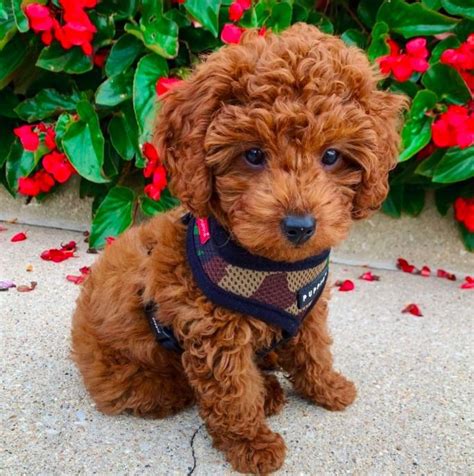
A Goldendoodle named Sully, initially terrified of a sprinkler toy, has become an internet sensation after a video showcasing his dramatic change of heart went viral, amassing over 7 million views on TikTok.
Sully’s owner, identified as @TheLifeofSullyG on TikTok, captured the canine’s surprising transformation from fearful observer to enthusiastic participant, turning him into the “peak summer pup.” The video, which has garnered significant attention, demonstrates Sully’s initial apprehension towards the Yard Hydrant Spinner sprinkler, followed by his eventual embrace of the water-based fun.
The video begins with Sully cautiously approaching the spinning sprinkler, displaying clear signs of uncertainty. However, as the footage progresses, Sully is seen frolicking and playing joyfully in the water, fully embracing the sprinkler’s refreshing spray. This heartwarming transformation resonated with viewers, leading to the video’s viral success.
“He used to be so scared of this thing 😂 now he can’t get enough,” Sully’s owner captioned the video, highlighting the dog’s remarkable change in attitude.
The video’s virality highlights the internet’s fascination with animal transformations and the joy of witnessing pets overcome their fears. Sully’s story has served as a reminder of the simple pleasures of summer and the capacity for animals to adapt and find joy in unexpected places.
Sully’s Transformation: A Detailed Look
The viral video, posted on TikTok, provides a step-by-step view of Sully’s evolving relationship with the sprinkler toy. Initially, Sully is seen observing the sprinkler from a safe distance, his body language indicating caution and hesitation. His ears are perked up, and his tail is tucked slightly, classic signs of a dog assessing a potentially threatening object.
As the sprinkler continues to spin and spray water, Sully gradually inches closer, curiosity seemingly piquing his interest. He circles the sprinkler cautiously, sniffing the water and observing its movement. At first, he flinches and retreats when the water gets too close, suggesting that the sensation is still unfamiliar and somewhat unsettling.
However, after a period of observation, Sully begins to exhibit signs of acceptance and even enjoyment. He starts to paw at the water, playfully batting at the streams as they spin around. His tail begins to wag more freely, and his body language becomes more relaxed.
The pivotal moment arrives when Sully fully commits to the sprinkler experience. He leaps into the spray, chasing the water streams and barking with excitement. He runs around the sprinkler, reveling in the cool water and the playful sensation. The video captures Sully’s unbridled joy, solidifying his transformation from fearful observer to “peak summer pup.”
The Science of Dog Fear and Adaptation
Sully’s reaction to the sprinkler is not uncommon among dogs. Many dogs exhibit fear or apprehension towards unfamiliar objects, sounds, or sensations. This fear response is rooted in their evolutionary history, where caution and vigilance were essential for survival.
When a dog encounters something new or potentially threatening, its brain triggers a cascade of physiological responses designed to prepare it for fight or flight. The dog’s heart rate increases, its breathing becomes faster, and its muscles tense. It may also exhibit behavioral signs of fear, such as trembling, hiding, barking, or growling.
However, dogs are also capable of adapting to new situations and overcoming their fears. Through repeated exposure and positive reinforcement, they can learn to associate previously feared objects or sensations with positive experiences. This process is known as habituation.
In Sully’s case, his initial fear of the sprinkler likely stemmed from its unfamiliar appearance, sound, and movement. The sudden spray of water may also have been startling or unpleasant. However, as he gradually exposed himself to the sprinkler and realized that it posed no real threat, he began to adapt and even enjoy the experience.
The Appeal of Viral Pet Videos
The popularity of Sully’s video is part of a broader trend of viral pet videos on the internet. These videos often feature animals engaging in humorous, heartwarming, or unexpected behaviors, capturing the attention and affection of viewers worldwide.
There are several reasons why viral pet videos are so appealing. First, they provide a source of entertainment and amusement. Animals are often unpredictable and their antics can be genuinely funny. Second, they offer a sense of connection and companionship. Many people feel a strong bond with animals and enjoy watching them interact with the world. Third, they can be uplifting and inspiring. Videos of animals overcoming challenges or displaying acts of kindness can evoke positive emotions and remind us of the good in the world.
Sully’s video, in particular, resonates with viewers because it showcases a relatable and heartwarming transformation. His journey from fear to joy is a testament to the resilience and adaptability of animals. It also reminds us of the simple pleasures of summer and the importance of embracing new experiences.
Goldendoodles: A Popular Breed Profile
Goldendoodles, like Sully, have become increasingly popular in recent years, celebrated for their intelligence, hypoallergenic coats, and friendly demeanor. A cross between a Golden Retriever and a Poodle, they inherit desirable traits from both breeds.
-
Temperament: Goldendoodles are generally known for being affectionate, playful, and good with children. They are intelligent and eager to please, making them relatively easy to train. Their friendly nature extends to other animals, making them suitable for multi-pet households.
-
Coat: One of the main reasons for the breed’s popularity is their hypoallergenic coat. Poodles are known for producing less dander than other breeds, which reduces the risk of allergic reactions in sensitive individuals. Goldendoodles inherit this trait to varying degrees, making them a popular choice for families with allergies. However, it’s important to note that no dog is truly 100% hypoallergenic.
-
Energy Level: Goldendoodles are relatively active dogs that require regular exercise. They enjoy activities such as walking, running, swimming, and playing fetch. They also benefit from mental stimulation, such as puzzle toys and training sessions.
-
Size: Goldendoodles come in different sizes depending on the size of the Poodle parent. Standard Goldendoodles are the largest, weighing between 50 and 90 pounds. Miniature Goldendoodles are smaller, weighing between 25 and 50 pounds.
-
Grooming: While Goldendoodles are considered hypoallergenic, they still require regular grooming to maintain their coat. They need to be brushed several times a week to prevent matting and tangles. They also need to be trimmed every few months to keep their coat at a manageable length.
-
Health: Goldendoodles are generally healthy dogs, but they can be prone to certain health problems, such as hip dysplasia, elbow dysplasia, and progressive retinal atrophy. It is important to obtain a Goldendoodle from a reputable breeder who screens their breeding dogs for these health conditions.
The Yard Hydrant Spinner: A Summer Staple
The Yard Hydrant Spinner, the toy that helped Sully overcome his fear, is a popular summer accessory for pet owners and children alike. It is a simple device that attaches to a garden hose and sprays water in a circular motion.
-
Design: The Yard Hydrant Spinner typically consists of a base that connects to the hose, a spinning nozzle that sprays water, and adjustable settings that control the spray pattern and water pressure.
-
Functionality: When the water is turned on, the pressure causes the nozzle to spin, creating a circular spray of water. The spray can be adjusted to create different patterns, such as a gentle mist or a more powerful stream.
-
Benefits: The Yard Hydrant Spinner provides a fun and refreshing way to cool off on hot summer days. It can also be used to water lawns and gardens. For pets like Sully, it offers a stimulating and engaging way to play in the water.
-
Safety: When using a Yard Hydrant Spinner, it is important to supervise children and pets to ensure their safety. Avoid spraying water directly into the eyes or face. Also, be mindful of the water pressure to prevent injuries.
Responsible Pet Ownership in the Age of Social Media
While Sully’s story is a heartwarming example of the positive side of social media, it also raises important questions about responsible pet ownership in the digital age.
-
Privacy: When sharing videos and photos of pets online, it is important to consider their privacy. Avoid posting sensitive information, such as their location or any identifying details.
-
Safety: Ensure that pets are safe and comfortable during filming. Avoid forcing them to do anything that they do not want to do or that could put them at risk.
-
Representation: Be mindful of how pets are portrayed in online content. Avoid perpetuating stereotypes or promoting harmful behaviors.
-
Education: Use social media as an opportunity to educate others about responsible pet ownership. Share tips on training, nutrition, and health care.
By being mindful of these considerations, pet owners can use social media to share the joy of their animals while also promoting responsible and ethical pet ownership.
The Enduring Appeal of Dogs
The story of Sully and his sprinkler adventure is a reminder of the enduring appeal of dogs. They are loyal companions, playful friends, and sources of unconditional love. Their ability to adapt, overcome challenges, and find joy in simple things is an inspiration to us all. As Sully enjoys the summer sun, he serves as an excellent example of why they are often regarded as “man’s best friend.”
Expanded Details:
The video that propelled Sully to internet fame showed a distinct evolution in his comfort level with the sprinkler. In the initial frames, Sully approaches the sprinkler with a hesitant gait, maintaining a considerable distance. His body is tense, and his ears are perked forward, indicative of heightened awareness and apprehension. He circles the device cautiously, sniffing the air and the water emanating from it, attempting to assess the potential threat. This initial stage is characterized by a clear reluctance to engage, with Sully often flinching or backing away when the water spray comes too close.
As the video progresses, a noticeable shift occurs. Sully begins to inch closer to the sprinkler, his curiosity seemingly overriding his initial fear. He starts to tentatively paw at the water, batting at the streams with his paws in a playful yet cautious manner. The change in his body language is subtle but significant; his tail begins to wag with increasing frequency, and his movements become less rigid. This marks a transitional phase where Sully is experimenting with the sprinkler, gradually becoming more comfortable with its presence.
The climax of the video showcases Sully’s complete transformation. He abandons his caution and leaps into the sprinkler’s spray with unbridled enthusiasm. He chases the water streams, barking with delight and running around the sprinkler with unrestrained joy. His body is relaxed, and his movements are fluid and playful, reflecting his newfound enjoyment of the water. This segment of the video perfectly captures Sully’s metamorphosis from a fearful observer to an active and delighted participant, solidifying his status as the “peak summer pup.”
The owner’s narration, “He used to be so scared of this thing 😂 now he can’t get enough,” provides context to Sully’s dramatic shift, adding a layer of amusement and relatability to the video. It underscores the unpredictable nature of animal behavior and the capacity for pets to overcome their fears in unexpected ways. The video’s popularity can be attributed not only to Sully’s transformation but also to the universal appeal of witnessing animals embrace new experiences and find joy in simple pleasures.
The broader context of viral pet videos highlights the internet’s insatiable appetite for heartwarming and humorous animal content. These videos often tap into our innate connection with animals, offering a source of entertainment, companionship, and emotional upliftment. Sully’s video resonates with viewers because it encapsulates these elements, presenting a narrative of fear conquered, joy discovered, and the simple pleasures of summer.
Furthermore, the appeal of Goldendoodles as a breed contributes to the video’s popularity. Known for their friendly disposition, intelligence, and hypoallergenic coats, Goldendoodles have become a favored breed among pet owners. Their playful and affectionate nature makes them ideal companions, and their allergy-friendly coats appeal to families with sensitivities. Sully’s video showcases the breed’s inherent charm and reinforces their reputation as lovable and adaptable pets.
The use of the Yard Hydrant Spinner as a catalyst for Sully’s transformation also adds to the video’s appeal. The sprinkler, a ubiquitous summer accessory, serves as a relatable object that many viewers can identify with. Its simple yet effective design makes it an ideal tool for providing pets with a refreshing and engaging water-based activity.
In conclusion, Sully’s viral video is a testament to the power of animal transformations, the allure of viral pet content, and the enduring appeal of dogs. It showcases the breed’s inherent charm, the joy of simple pleasures, and the capacity for animals to overcome their fears in unexpected ways. This narrative, coupled with the video’s humorous and heartwarming tone, has resonated with viewers worldwide, propelling Sully to internet stardom and solidifying his status as the “peak summer pup.”
Frequently Asked Questions (FAQ):
1. What was Sully’s initial reaction to the sprinkler toy?
Sully was initially scared of the sprinkler toy. The video showed him cautiously approaching it and keeping a distance, indicating he was apprehensive and unsure about the spinning water. According to his owner, he “used to be so scared of this thing.”
2. How did Sully’s reaction to the sprinkler change over time?
Over time, Sully’s fear transformed into enthusiasm. He gradually started pawing at the water, then eventually began leaping into the spray and chasing the water streams, showing unbridled joy.
3. What breed of dog is Sully, and what are some common traits of this breed?
Sully is a Goldendoodle, a cross between a Golden Retriever and a Poodle. Goldendoodles are known for being intelligent, affectionate, playful, and often have hypoallergenic coats, making them popular family pets.
4. How many views did the video of Sully’s transformation get on TikTok?
The video of Sully’s transformation garnered over 7 million views on TikTok, making him an internet sensation.
5. What is the Yard Hydrant Spinner, and why is it a suitable toy for dogs in the summer?
The Yard Hydrant Spinner is a sprinkler toy that attaches to a garden hose and sprays water in a circular motion. It’s a suitable summer toy for dogs because it provides a fun and refreshing way to cool off and play in the water, offering both physical activity and mental stimulation.
6. Is Sully’s transformation typical behavior for dogs?
While individual dog personalities vary, it’s not uncommon for dogs to initially be fearful of new objects or experiences and then adapt over time. Through repeated exposure and positive reinforcement, they can learn to associate previously feared objects with positive experiences, as seen with Sully.
7. What are some factors that might contribute to the popularity of viral pet videos like Sully’s?
Several factors contribute to the popularity of viral pet videos, including the entertainment value of watching animals engage in humorous or unexpected behaviors, the sense of connection and companionship that people feel with animals, and the uplifting and inspiring nature of seeing animals overcome challenges or display kindness.
8. How does Sully’s story relate to responsible pet ownership?
Sully’s story highlights responsible pet ownership by showing how owners can help their pets overcome fears and adapt to new experiences in a safe and positive environment. It also emphasizes the importance of providing pets with opportunities for play, exercise, and mental stimulation.
9. Are Goldendoodles truly hypoallergenic?
While Goldendoodles are often considered hypoallergenic because they shed less than some other breeds, no dog is truly 100% hypoallergenic. They still produce some dander, which can trigger allergies in sensitive individuals. However, their low-shedding coats can significantly reduce allergic reactions for some people.
10. What kind of health issues are Goldendoodles prone to, and how can potential owners mitigate these risks?
Goldendoodles can be prone to certain health problems, such as hip dysplasia, elbow dysplasia, and progressive retinal atrophy. Potential owners can mitigate these risks by obtaining a Goldendoodle from a reputable breeder who screens their breeding dogs for these health conditions and provides health guarantees. Regular veterinary check-ups and a healthy lifestyle are also important for maintaining a Goldendoodle’s health.
11. What steps can owners take to ensure the safety of their pets when using water toys like the Yard Hydrant Spinner?
To ensure the safety of pets when using water toys, owners should always supervise their pets during playtime, avoid spraying water directly into the eyes or face, and be mindful of the water pressure to prevent injuries. They should also ensure that the play area is free of hazards and that the pet has access to fresh water and shade.
12. What are some tips for training a dog to overcome a fear of unfamiliar objects or situations?
Tips for training a dog to overcome fear include gradual exposure, positive reinforcement (using treats, praise, or toys), creating a safe and comfortable environment, avoiding forcing the dog into the situation, and seeking guidance from a professional dog trainer or behaviorist if needed.
13. How can social media be used to promote responsible pet ownership?
Social media can be used to promote responsible pet ownership by sharing tips on training, nutrition, and health care, raising awareness about animal welfare issues, showcasing positive examples of pet ownership, and educating others about the importance of responsible breeding and adoption practices.
14. What are the grooming requirements for Goldendoodles, and how often should they be groomed?
Goldendoodles require regular grooming to maintain their coats and prevent matting. They should be brushed several times a week and trimmed every few months to keep their coat at a manageable length. Professional grooming services may be needed to maintain their coats properly.
15. What are some alternative water activities for dogs who may not enjoy sprinklers?
Alternative water activities for dogs include swimming in a pool or lake, playing fetch in shallow water, using a kiddie pool, or engaging in water-based training exercises. The key is to find an activity that the dog enjoys and that provides a safe and positive experience.
16. What is the typical energy level of a Goldendoodle, and how much exercise do they require?
Goldendoodles are relatively active dogs that require regular exercise. They need at least 30-60 minutes of exercise per day, which can include walking, running, playing fetch, or swimming. They also benefit from mental stimulation, such as puzzle toys and training sessions, to keep them happy and engaged.
17. How does the owner’s attitude impact a dog’s response to new or potentially scary things? A dog owner’s attitude and demeanor play a significant role in how a dog responds to new or potentially scary situations. Dogs are highly perceptive and often mirror the emotions and behaviors of their owners. If an owner is calm, confident, and reassuring, the dog is more likely to feel safe and secure, which can help reduce anxiety and fear. Conversely, if the owner is anxious, nervous, or overprotective, the dog may pick up on these emotions and become more fearful or reactive. The owner’s presence and behavior can serve as a source of comfort and guidance, helping the dog to navigate unfamiliar experiences with greater confidence.
18. What are some early signs that a dog is uncomfortable or fearful of something new? Recognizing the early signs of discomfort or fear in dogs is crucial for preventing escalation and promoting a positive experience. Common indicators include:
- Body Language: Tucked tail, lowered head, flattened ears, tense muscles, trembling, panting (when not hot), lip licking, yawning (when not tired), whale eye (showing the whites of their eyes).
- Behavioral Changes: Hiding, pacing, avoidance, excessive barking or whining, growling, snapping, or biting (as a last resort).
- Changes in Appetite: Loss of appetite or reluctance to eat treats in the presence of the feared object or situation.
Paying close attention to these subtle cues allows owners to intervene early, providing reassurance and support to help their dogs cope with the situation.
19. What is desensitization and counterconditioning, and how can these techniques be used to help a dog overcome a fear? Desensitization and counterconditioning are two effective training techniques used to help dogs overcome fears and phobias.
-
Desensitization: Involves gradually exposing the dog to the feared stimulus at a very low intensity, starting with something that elicits minimal or no fear. The intensity is gradually increased over time as the dog becomes more comfortable. For example, if a dog is afraid of thunder, desensitization might involve playing recordings of thunder at a very low volume, gradually increasing the volume as the dog becomes more accustomed to the sound.
-
Counterconditioning: Involves pairing the feared stimulus with something positive, such as treats, praise, or toys. The goal is to change the dog’s association with the stimulus from negative to positive. For example, if a dog is afraid of the vacuum cleaner, counterconditioning might involve giving the dog a tasty treat every time the vacuum cleaner is turned on.
By combining desensitization and counterconditioning, owners can systematically reduce their dog’s fear response and help them learn to cope with previously feared stimuli in a more positive and relaxed manner.
20. How can owners ensure that viral pet videos are created ethically and do not exploit or endanger animals? Creating ethical and responsible viral pet videos requires careful consideration of the animal’s well-being and avoiding any exploitation or endangerment. Key principles include:
- Prioritizing the Animal’s Comfort and Safety: The animal’s needs and comfort should always come first. Avoid forcing them to do anything they are not comfortable with or that could put them at risk.
- Avoiding Stressful or Fearful Situations: Do not create scenarios that are designed to elicit fear or distress in the animal.
- Respecting the Animal’s Boundaries: Pay attention to the animal’s body language and stop filming if they show signs of discomfort or stress.
- Avoiding Misrepresentation: Be honest about the animal’s behavior and avoid exaggerating or fabricating events for entertainment purposes.
- Obtaining Consent (If Applicable): If the video involves other people, ensure that they have given their consent to be filmed and that they are comfortable with the content being shared online.
- Avoiding Commercial Exploitation: Be mindful of the potential for commercial exploitation and ensure that the animal’s well-being is not compromised for financial gain.
By adhering to these ethical guidelines, owners can create viral pet videos that are both entertaining and respectful of the animals involved.









